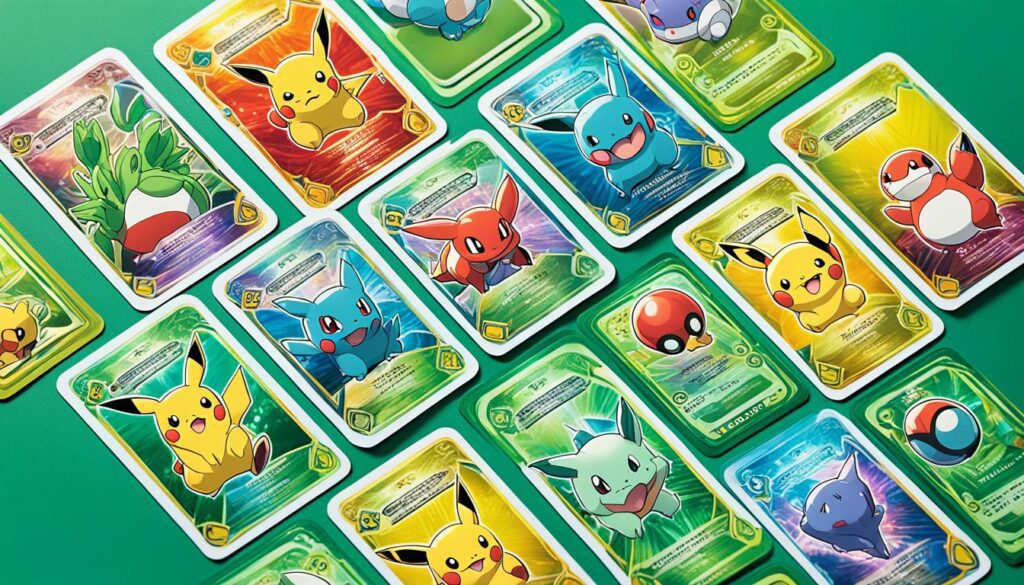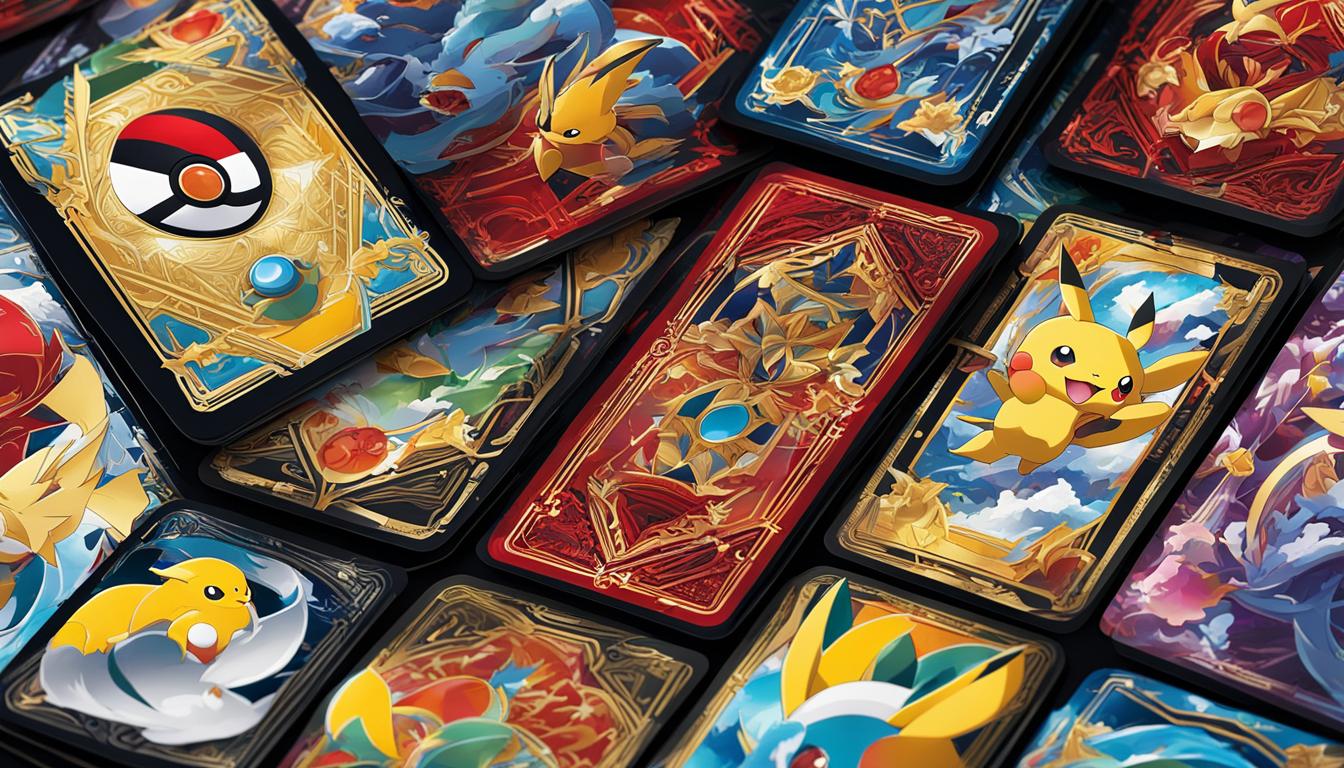Whether you love compiling new deckbuilding strategies or hope to grow your collection to honor your favorite characters, hunting for ultra rare Pokémon cards can be exhilarating. If you are from North America or Europe, Japanese rare Pokémon cards offer an additional challenge in your collecting journey. But how rare are Japanese Pokémon cards outside of Asia, really? Understanding the rarity of these cards is critical for both buyers and sellers. This guide will provide you with an overview of Japanese Pokémon cards, their rarity, and how to identify valuable cards in the Japanese market.
Overview of Japanese Pokémon Cards
Japanese Pokémon cards are highly sought-after by collectors outside of Japan. While most of these cards are similar to their English counterparts, they often feature alternate holofoil designs, slightly tweaked art, or unique characteristics that make them collector’s items. Additionally, many rare Japanese Pokémon cards come from limited promotional releases that never reach the primary Western market. Understanding the unique features and scarcity of Japanese Pokémon cards is crucial in determining their value and rarity.
How Rare Are Japanese Pokémon Cards?
Japanese Pokémon cards are relatively common and affordable within Japan itself. However, when it comes to the Western market, the scarcity of these cards significantly increases their prices due to limited supply. Several factors contribute to the rarity of Japanese Pokémon cards.
Firstly, booster packs in Japan typically contain only 5 cards, compared to the 10 cards found in English packs. This smaller number of cards in a pack reduces the odds of obtaining a super rare card. As a result, rare Japanese Pokémon cards become even more valuable and sought after.
Secondly, there are Japan-exclusive cards and promotional releases that further contribute to the rarity of Japanese Pokémon cards in the Western market. These exclusive cards are not easily accessible to collectors outside of Japan, making them highly coveted.
To illustrate the rarity of Japanese Pokémon cards, here is a comparison of booster pack contents between Japan and the Western market:
| Country | Number of Cards per Booster Pack |
|---|---|
| Japan | 5 |
| Western Market | 10 |
This table clearly shows that Japanese booster packs contain only half the number of cards compared to those in the Western market. With fewer opportunities to obtain rare cards, the rarity and value of Japanese Pokémon cards increase significantly.
Understanding the rarity of Japanese Pokémon cards can be crucial for collectors and sellers alike. Whether you’re looking to expand your collection or invest in valuable cards, recognizing the rarity and scarcity of Japanese Pokémon cards is essential in navigating the market effectively.
Rarity Classifications of Japanese Pokémon Cards
When it comes to Japanese Pokémon cards, understanding their rarity is crucial for collectors and enthusiasts. Japanese Pokémon cards follow a classification system that helps identify and determine the value of each card. Here are the different rarity classifications of Japanese Pokémon cards:
| Rarity | Abbreviation |
|---|---|
| Common | C |
| Uncommon | U |
| Rare | R |
| Ultra Rare | UR |
| Secret Rare | SR |
| Hyper Rare | HR |
| Character Rare and Character Super Rare | CHR or CSR |
| Amazing Rare | AR |
These rarity classifications help collectors in assessing the rarity and value of Japanese Pokémon cards. By understanding the classification, you can determine the relative scarcity and desirability of each card in your collection.

Identifying the rarity of Japanese Pokémon cards is vital for collectors and traders alike. The rarity classification system provides valuable insights into the value and rarity of each card, allowing collectors to make informed decisions when buying, selling, or trading Japanese Pokémon cards.
How to Tell if Japanese Pokémon Cards Are Rare: Tips on Finding the Rarest Cards in the Game
Identifying rare Japanese Pokémon cards can be challenging, but there are several tips and resources that can help collectors determine a card’s rarity. When examining a Japanese Pokémon card, visual indicators such as the rarity symbol and set number can provide valuable clues.
The rarity symbol is located at the bottom right corner of the card and is represented by a small symbol or letter. Common symbols include a circle for Common cards (C), a diamond for Uncommon cards (U), and a star for Rare cards (R). Ultra Rare cards (UR) and Secret Rare cards (SR) often have unique symbols or holofoil patterns that distinguish them from other rarities.
The set number, typically found on the bottom left or right corner of the card, can also indicate a card’s rarity. Higher set numbers usually correspond to rarer cards. For example, cards with set numbers like 100/XY or 100/SM are typically more common, while cards with set numbers like 150/XY or 150/SM are often rarer and more valuable.
Researching community resources and price guides can provide additional insight into the rarity and value of Japanese Pokémon cards. Online forums and collector communities often have dedicated sections where members discuss card rarity and share information about specific releases in the Japanese market.
It’s also helpful to consult with experienced collectors who can provide firsthand knowledge and expertise. These collectors may have valuable insights and tips on finding rare Japanese Pokémon cards. Joining local Pokémon card collector groups or attending trading events can provide opportunities to connect with experienced collectors in your area.
Studying famous examples of rare Japanese Pokémon cards can further enhance your understanding of rarity and value within the Japanese market. By examining the characteristics and history of these cards, you can develop a discerning eye for spotting rare and valuable cards in your own collection or in the market.
Remember, becoming proficient at identifying the rarity of Japanese Pokémon cards takes practice and patience. By familiarizing yourself with visual indicators, utilizing community resources, and seeking guidance from experienced collectors, you can increase your chances of finding the rarest and most sought-after Japanese Pokémon cards for your collection.
Rare Japanese Pokémon Cards List
There are several rare Japanese Pokémon cards that are highly sought-after by collectors. These cards often include vintage Pokémon cards that are extremely rare in the Western world. Examples of rare Japanese Pokémon cards include Pikachu Illustrator, 1998 Promo Kangaskhan, Extra Battle Day Lillie, and the 1996 Japanese Holographic Charizard card. While these cards may command high prices, there are also more affordable rare Japanese Pokémon cards available for collectors. Keeping an eye on the market and utilizing community resources can help collectors find rare Japanese Pokémon cards that suit their budget.
| Card Name | Year of Release | Rarity Level |
|---|---|---|
| Pikachu Illustrator | 1998 | Ultra Rare (UR) |
| 1998 Promo Kangaskhan | 1998 | Ultra Rare (UR) |
| Extra Battle Day Lillie | N/A | Secret Rare (SR) |
| 1996 Japanese Holographic Charizard | 1996 | Rare (R) |
Where Can You Find These Japanese Rare Pokémon Cards?
Finding rare Japanese Pokémon cards can be a challenge, especially when it comes to locating reliable sellers and authentic cards. Many second-hand markets are flooded with counterfeit cards and unreliable merchants, making it crucial to find trustworthy sources for your collecting needs.
Online marketplaces like eBay and Amazon may seem like convenient options, but they lack the necessary protection against scams and fake cards. To ensure the authenticity and quality of your rare Japanese Pokémon cards, it is recommended to shop with reputable sellers.
Danireon is one such trusted seller that offers a diverse inventory of authentic Japanese Pokémon cards. They understand the value of rarity and cater to collectors looking for rare Japanese Pokémon cards in excellent condition. By choosing reputable sellers like Danireon, you can have peace of mind knowing that you are purchasing genuine cards for your collection.

